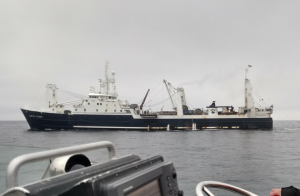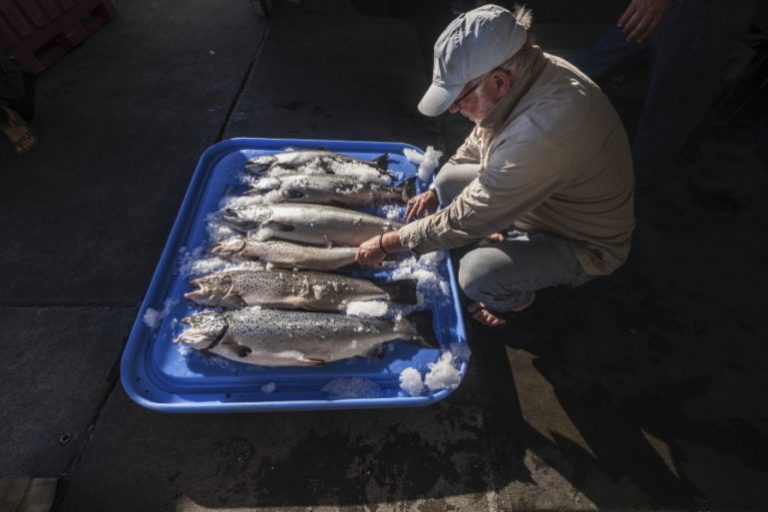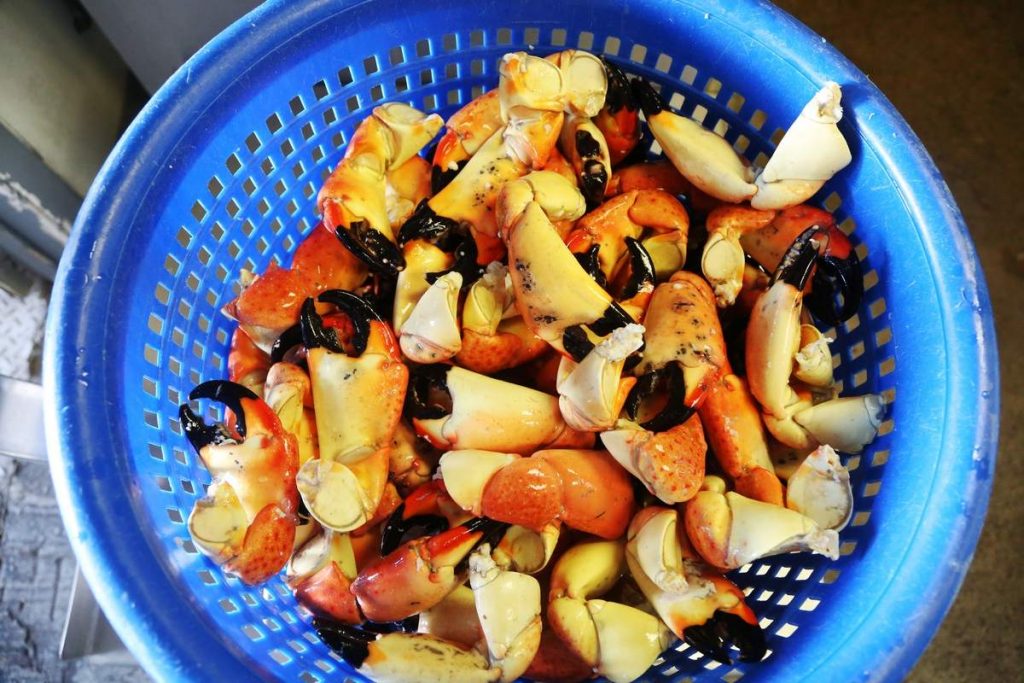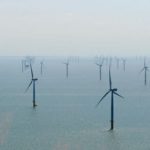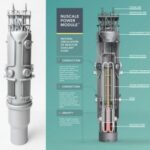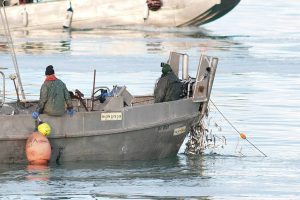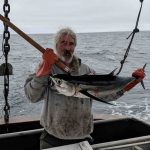Tag Archives: Oregon Dungeness Crab Commission
Commercial Dungeness crab season delayed
 Pre-season testing shows Dungeness crabs are too low in meat yield in some ocean areas, delaying Oregon’s commercial season until at least Dec. 16. Targeted to open Dec. 1, Oregon’s ocean commercial Dungeness crab season can be delayed so consumers get a high-quality product, and crabs are not wasted. The next round of crab meat yield and biotoxin testing will occur in the coming weeks. Results help determine if the season opens Dec. 16 or is further delayed or split into areas with different opening dates. Oregon, California and Washington coordinate Dungeness crab quality testing and the commercial season opening dates. >>click to read<< 14:30
Pre-season testing shows Dungeness crabs are too low in meat yield in some ocean areas, delaying Oregon’s commercial season until at least Dec. 16. Targeted to open Dec. 1, Oregon’s ocean commercial Dungeness crab season can be delayed so consumers get a high-quality product, and crabs are not wasted. The next round of crab meat yield and biotoxin testing will occur in the coming weeks. Results help determine if the season opens Dec. 16 or is further delayed or split into areas with different opening dates. Oregon, California and Washington coordinate Dungeness crab quality testing and the commercial season opening dates. >>click to read<< 14:30
Oregon: Delayed Commercial Dungeness crab season
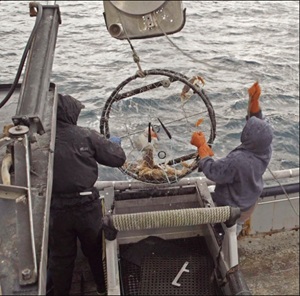 Pre-season testing shows Dungeness crabs are too low in meat yield in some ocean areas, delaying Oregon’s commercial season until at least Dec. 16, according to the Oregon Department of Fish and Wildlife (ODFW). Targeted to open Dec. 1, Oregon’s ocean commercial Dungeness crab season can be delayed so consumers get a high-quality product and crabs are not wasted. The commercial bay crab fishery (currently open) closes at 12:01 a.m. Dec. 1 in conjunction with the delayed ocean commercial season. It will reopen when the ocean commercial season does so. The next round of crab meat yield and biotoxin testing will occur in the coming weeks. Results help determine if the season opens Dec. 16 or is further delayed or split into areas with different opening dates. >>click to read<< 21:38
Pre-season testing shows Dungeness crabs are too low in meat yield in some ocean areas, delaying Oregon’s commercial season until at least Dec. 16, according to the Oregon Department of Fish and Wildlife (ODFW). Targeted to open Dec. 1, Oregon’s ocean commercial Dungeness crab season can be delayed so consumers get a high-quality product and crabs are not wasted. The commercial bay crab fishery (currently open) closes at 12:01 a.m. Dec. 1 in conjunction with the delayed ocean commercial season. It will reopen when the ocean commercial season does so. The next round of crab meat yield and biotoxin testing will occur in the coming weeks. Results help determine if the season opens Dec. 16 or is further delayed or split into areas with different opening dates. >>click to read<< 21:38
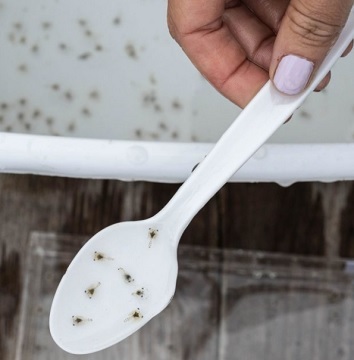
Shining the Light on Baby Crabs
The light trap at Whaler Bay is one in a network of 20 traps placed throughout the Canadian side of the Salish Sea, from Read Island in the north to James Island near Sidney in the south, as part of the Hakai Institute’s multiyear Sentinels of Change program. Launched in 2022 to mark the United Nations Decade of Ocean Science for Sustainable Development, this community-centered initiative involves understanding how marine invertebrates are adapting to the changing environment. The light trap project, which focuses on the native Dungeness crab—a much-loved treat on the coast that can grow to the size of an adult’s outstretched hand—is a part of this program. Photos, >click to read< 10:17
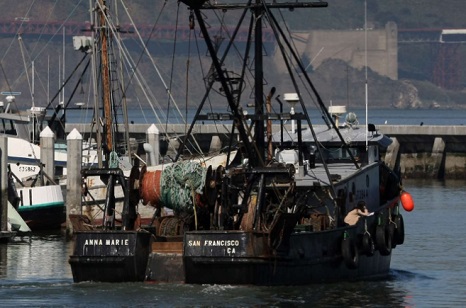
Oregon Fishing Industry Fed Up With Agency ‘Ignoring’ Their Offshore Wind Concerns
The West Coast Seafood Processors Association, the Midwater Trawlers Cooperative and the Oregon Dungeness Crab Commission claim their concerns about proposed offshore wind project call areas, areas where the agency is seeking public comment, and their impact on key fish populations due to the turbines’ electromagnetic field (EMF) cables, have been ignored by BOEM. They also worry about the impact offshore winds would have on their businesses and the entire state’s economy. “BOEM has told us that if Oregon doesn’t want this, they will back off and pursue other offshore wind areas, and we’ve made it pretty clear to them that Oregon doesn’t want this, and they’re still pushing forward,” Lori Steele, executive director of the seafood trade group West Coast Seafood Processors Association, told the DCNF. “They are giving us nothing but lip service,” she added. >click to read< 09:43
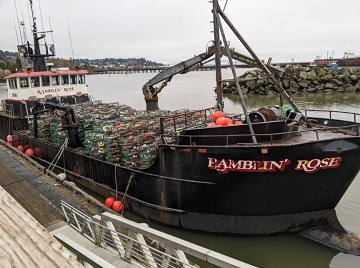
Crab fishermen weather a bruising season
It was a dream season for Oregon’s Dungeness crab fishery last year. Fishing began on the traditional Dec. 1 opener for the first time in years. Domoic acid, a marine toxin that has hampered the valuable commercial fishery time and again in recent years, was almost nowhere to be seen in Oregon or Washington state waters. “Last season, everything that could go right went right,” said Tim Novotny, executive director of the Oregon Dungeness Crab Commission. “And this year — I don’t know if it’s been completely the opposite, but it’s been close.” >click to read< 07:22

Oregon’s Late Dungeness Crab Seasons Create Challenges for Crabbers, Restaurants, and Diners
The impact is felt strongest by Oregon’s 423 commercial crabbers who depend on Dungeness for a substantial portion of their annual revenue. Tim Novotny, executive director of the Oregon Dungeness Crab Commission, said that Dungeness is easily the most profitable of Oregon’s fisheries, and while many crabbers are able to harvest shrimp or rockfish in the off-season, the uncertainty heading into the critical crab season in December is especially stressful. “They’ve got to try to find a way to keep their crew busy and fill out the payroll,” Novotny said. “It’s very harrowing during that time period. They’ve gotten used to these delays, but it’s still very uncomfortable and full of angst.” >click to read< 08:32
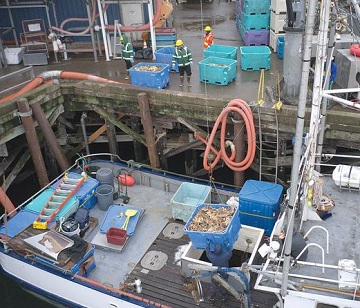
Boats begin offloading crab
After a month-and-a-half delay, Oregon’s commercial Dungeness crab season is underway along at least part of the coast, and crab boats have been busy, already hauling significant catches back to port to be offloaded at the docks. Tim Novotny is the executive director of the Oregon Dungeness Crab Commission, an industry-funded agency established by the Oregon Legislature in 1977 to serve as an advocate for the crabbing industry. When Novotny was asked for his initial thoughts on this year’s season, he said, “It’s been a ball of yarn,” adding that it’s pretty much the opposite of last year. Photos, >click to read< 07:57
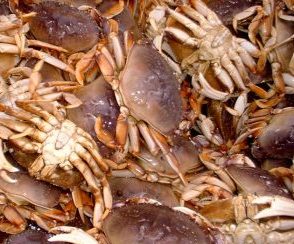
Commercial Dungeness crab season opens January 15
The Oregon Department of Fish and Wildlife announced Friday that the commercial Dungeness crab fishery season opens from Cape Falcon to Cape Arago January 15. The season opens February 1 from Cape Falcon north to Washington State; in accordance with the Tri-State Protocol. ODFW says that the crabs are ready for harvest after passing all administered tests. Crab meat fill now meets criteria in all areas of Oregon, and biotoxins are below alert levels in all crab tested from Cape Arago north. However, domoic acid testing of crab will continue from Cape Arago south to the California border as test results Thursday showed elevated levels of domoic acid in the area. >click to read< For more information about crabbing season you can visit ODFW’s website. 09:21
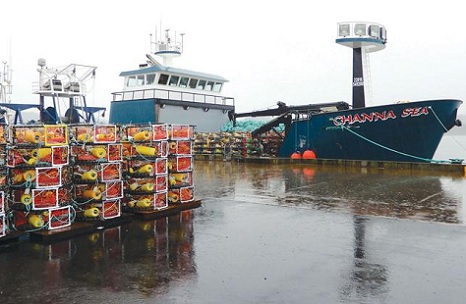
Dungies beyond crabbers’ grasp
The delay in starting the crab season, now stretching into its first month,,, “People have no idea how much money Dungeness crab bring into Newport,” said Casey Cooper, a third-generation fisherman who was rigging the steel-hulled Leslie Lee with crab pots at Newport’s International Terminal. “From car dealers to grocery stores, everybody’s waiting for this huge annual infusion of cash.” Businessman Dean Fleck of England Marine supplies the crab fleet with rope, buoys, crab pots and other fishing gear. He said the delay is being felt up and down the waterfront, where hundreds of workers from deckhands to processors are idled. He claimed each dollar generated by crab fishing is “brand new” to the local economy, with the potential to rebound seven times. >click to read< 15:41

Latest round of Dungeness crab testing to conclude Tuesday
The second round of domoic acid and meat-quality testing for Dungeness crabs in Oregon, Washington and California is scheduled to conclude Tuesday as the commercial crabbing industry waits for an opening date. The results, which Oregon Department of Fish and Wildlife officials say are likely to be published by Wednesday, will determine if the coast’s commercial Dungeness crab season will open, or if the industry can expect more delays. >click to read< 09:58

Here’s why the West Coast Dungeness crab season has been delayed
Oregon’s most valuable commercial fishery, Dungeness crab, will have its season delayed from its traditional Dec. 1 start date because of low meat yields. Testing shows the crabs in some ocean areas off the West Coast don’t have enough meat in them to satisfy the commercial market. In some areas, testing also showed elevated levels of the naturally occurring toxin domoic acid, which can make the crabs unsafe to eat. ODFW conducts tests out of six major crabbing ports in partnership with the Oregon Dungeness Crab Commission and the Oregon Department of Agriculture. Oregon, California and Washington coordinate on commercial season opening dates, and the other states will also be delaying their crab season until at least Dec. 16. >click to read< 12:10
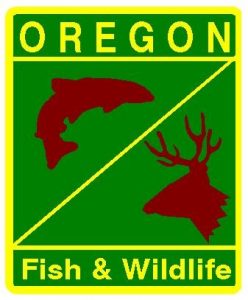
Oregon: Ocean commercial Dungeness crab season delayed
The ocean commercial Dungeness crab season opener is delayed until at least Dec. 16 for the entire Oregon coast. Pre-season testing shows crabs are too low in meat yield in some areas. Elevated domoic acid also was detected in some crab viscera (guts). Targeted to open Dec. 1, Oregon’s ocean commercial Dungeness crab season can be delayed so consumers get a high-quality product and crabs are not wasted. The next round of crab meat yield and biotoxin testing will occur in the coming weeks. Results help determine if the season opens Dec. 16 or is further delayed or split into areas with different opening dates. >click to read< 11:41
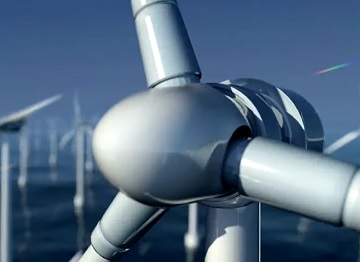
Blown of the water? West Coast offshore wind farm area announcement raises concerns
Offshore wind energy is coming to Oregon, according to the Bureau of Ocean Energy Management, but the seafood industry says it’s an oncoming windstorm. These massive areas, covering 2,181 square miles, already are utilized by the fishermen to harvest nutritious, sustainable seafood proteins. As part of its process, BOEM will solicit interest from wind energy developers before doing a basic environmental assessment of the areas. Comprehensive environmental studies will be completed later, after leases are already issued and enormous investments are already made. Fishermen already are questioning the value of placing turbines in areas off Morro Bay and Humboldt Bay, Calif. >click to read< 10:53
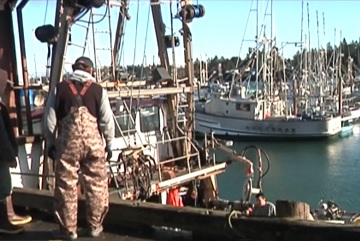
Oregon Dungeness crab season sets new record for value
The Oregon Dungeness Crab Commission expects the 2021-2022 season to set a new record as the highest grossing season ever. The current record of $74.2 million was set in 2017-2018. This year, the Dungeness crab fleet has already landed $78.1 million, and the season is not yet over. The 20-year average is 17.3 million pounds. As of Tuesday, the fleet had brought 15.3 million pounds ashore, below average, but above last season’s 12.2 million pounds. Video, >click to read< 15:04

Oregon: 2021-22 Dungeness Crab season blowing past last year’s harvest
Tim Novotny is a spokesman with the Oregon Dungeness Crab Commission. He says it was great to have this commercial crabbing season start on schedule for the first time since 2014, but the numbers as of Tuesday (Jan. 4) are also wonderful. “We finished our first month of the season so far with 12.8 million lbs. landed, so that surpassed last year. And our ex-vessel value has come in at $63.3 million. So that surpassed all of last year. >click to read< 09:50
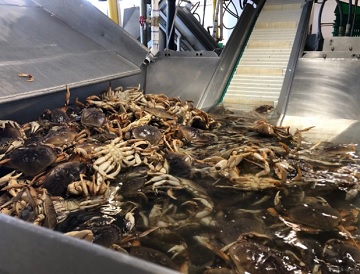
Dungeness crab catch ‘amazing’, but shortage of crew on boats, plant workers an issue
“About 80% of our whole seasons gets landed in the first 8 weeks,” said Tim Novotny with the Oregon Dungeness Crab Commission. “So we had about 4 million in the first week and about double that in the next week.” By the pound, crabbers are getting a good bang for their buck due to the quality of the crabs. “We could use more workers, both on the boats and in the processing sector,” >click to read< 09:01
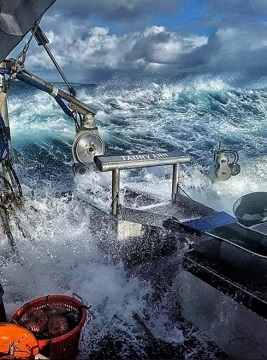
Commercial Crab Season: Boats out, baskets ready
For the first time since the 2014-15 season, the ocean commercial Dungeness crab fishery opens as scheduled Dec. 1 along the Oregon Coast. Commercial crab vessels were able to set gear Nov. 28. the pre soak period, in anticipation of the first pull of ocean crab pots on Dec. 1. In partnership with the Oregon Dungeness Crab Commission and the commercial Dungeness crab industry, ODFW tests crabs out of Oregon’s six major crabbing ports beginning in early November. This year, crab tested from Oregon’s crab harvest areas have high meat yield and are well below domoic acid alert levels. >click to read<12:16

Grant: Researchers to find ways to prevent injury in the Dungeness crab fishery
The grant from the National Institute for Occupational Safety and Health, totaling $895,000 over the next three years, will allow OSU professors Jay Kim and Laurel Kincl to build on existing research with the Dungeness crab fishing industry, where workers suffer high rates of both fatal and non-fatal injuries. For their upcoming study, Kim and Kincl will look specifically at the configuration of the “block,” the mechanized winch that pulls up the line of crab pots out of the water and swings them into the boat; and the crab sorting table, where crabs are sorted after being brought up from the water. >click to read< 18:18

Pandemic, labor , product shortages, and supply chain issues disrupt Dungeness Crab market
Seafood distributors, sellers and processors point to a number of factors that converged to create a perfect storm: the coronavirus pandemic, labor shortages, product shortages, supply chain issues and market demands. All have contributed to drive prices up from the usual $25 or so per pound to as much as $52. This season was difficult for many in the industry. It opened late and yielded a mere 12 million pounds to date, compared to last year’s 20 million. On average, commercial crabbers land around 16 million pounds in Oregon, though the fishery can be cyclical, with boom and bust periods. >click to read< 19:13
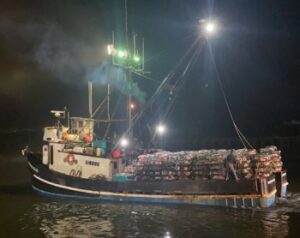
Dungeness Crab season is going strong on Oregon Coast
The commercial Dungeness crab season has been underway for about four months. About 11 million pounds of crab have been off-loaded so far. The Dungeness Crab Commission says season yields go up and down each year. This year is expected to be a down year, but the commission doesn’t expect to see too steep a drop in the overall catch. >click to read< 09:10

Dungeness Crab Season opens Dec.16th From Cape Falcon to the California border!
Fishing vessels can start setting gear for the pre-soak period as soon as Dec. 13 and see their first pulls hit the docks on opening day. The season is normally scheduled to open Dec. 1, but is often delayed for quality assurance reasons and toxin testing. Testing this year showed a low meat yield in crab specimens, prompting the two-week delay to allow the crabs to fill with meat. Last year’s opening day was delayed until Dec. 31 for similar reasons. Domoic acid levels in crab across the coast were found to be safe for human consumption,,, >click to read< 12:55
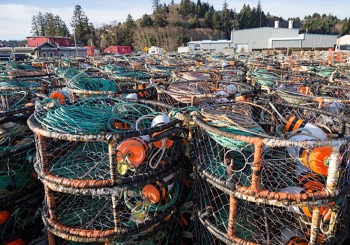
Crab industry, Oregon continue plans to avoid whale entanglement
New regulations for commercial Dungeness crab fishermen in Oregon aim to get boats on the water earlier in the season and reduce the amount of gear to avoid tangling with endangered whales. “Our fleet is made up of 400 individual businesspeople who each bring a different perspective to the issue,” said Hugh Link, the executive director of the Oregon Dungeness Crab Commission. “For over three years, they have been given the opportunity to weigh in on how best to mitigate the whale entanglement risk,” he continued. “But it is an ongoing process. These upcoming meetings are the next important step and we hope they take the opportunity to have their voices heard.”

‘Okay, so what do we do?’ – New Markets Reshape Crab Industry
“China shutting down was when we first started to feel the impact of the (coronavirus) pandemic, then the closures of restaurants and stores hit us full blast,” says Novotny. “All of a sudden nothing was going out.” “But necessity is the mother of invention. Everyone from the crabbers to the processors to the mom-and-pop places started saying, ‘Okay, so what do we do?’ and you started to see Pacific Seafood start shipping crab all over the country.” Until the pandemic, flash-freezing techniques, which freeze crabs in a briny block of ice to maintain flavor and texture, was a niche market, used primarily for small orders. >click to read< 10:37

Dungeness fleet back off Oregon Coast
Crabbing restrictions were lifted Friday along the South Coast after biotoxin levels in Dungeness were found to be safe again, reinviting the region’s commercial fleet to take full advantage of what is now the second-best Oregon crabbing season on record. Oregon Department of Agriculture tests Friday showed domoic acid levels in Dungeness were back into the safe margins for the second consecutive week, allowing sport crabbers back to the ocean and bays that have been off-limits since May 10. >click to read<19:53

Second delay idles Newport crab fleet
The commercial Dungeness crab season has been pushed back — again — this time to at least Dec. 31 as fishery managers wait for pockets of light crab to come up to par. While some crab need more time to reach the meat content target of 25 percent, the wait has disappointed Newport fishermen who question extending delay when so much of the product is ready to be brought to the docks. Crab from Coos Bay north appear ready for harvest. Tests conducted Dec. 6-9 showed Newport crab at 26 percent meat content,,, Newport fisherman Corey Rock called the delay another example of a limited number of fishermen dictating the terms of the season to the larger fleet. >click to read<09:17
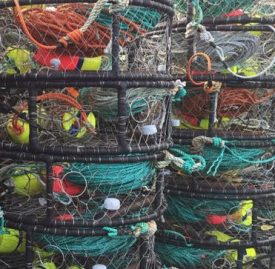
Crab season delayed again in Oregon – Crabbers on hold until at least Dec. 31
Oregon’s Dungeness crab fishery will not open until at least Dec. 31 after testing by state fishery managers revealed crabs are still too low in meat yield in some areas of the coast. The valuable commercial fishery traditionally opens on Dec. 1. In November, fishery managers announced the season would be delayed until mid-December because crabs were not plump enough. The most recent delay is not a big surprise, said Tim Novotny, the spokesman for the Oregon Dungeness Crab Commission, which advocates for the industry. “It was completely justified,” said John Corbin, a commercial fishermen in Clatsop County and chairman of the crab commission. >click to read<19:38
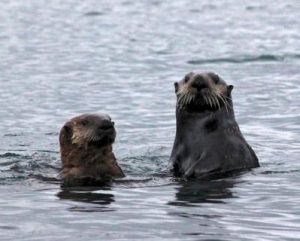
Nonprofit would bring sea otters back to Oregon. Commercial fishing industry isn’t so sure
“For about 110 years now, there’s been a big hole in our environment,” said Peter Hatch, a Siletz tribal member living in Corvallis.,, Hatch recently joined the board of a new nonprofit dedicated to bringing the sea otter back to Oregon waters. The group is named the Elakha Alliance,,, But excitement is not the unanimous response. “The notion of full-scale reintroduction of otters makes me feel very apprehensive because we don’t know how that will affect commercial fisheries,” said Newport crabber Bob Eder. Eder’s concerned that reintroduction could change his industry. >click to read<20:33
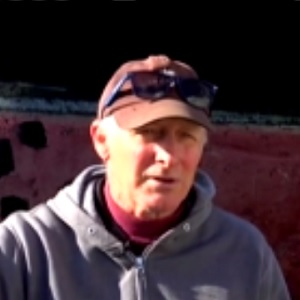
Oregon Crabber: ‘We’ll wait for a better price instead of going out fishing for less of a price’
Local crabbers are once again bracing for a problem they know all too well. The start of the commercial Dungeness crab season is being delayed until December 16 – at the earliest.,, Jeff Sober, a crabber of almost 40 years, said it happens frequently. He is always ready by December – but saves money just case. “We’re just going to be delayed. The season will happen eventually,” he said. “We do have a Christmas market. If we miss out on that, we’ll probably miss out on some money.” >click to read<19:38

Coast Guard will help researchers track whales along the West Coast
The Oregon crab industry is putting up money to launch a new research study on where whales swim and feed along the Pacific Coast. The study stems from growing concern West Coast-wide about whales getting tangled in fishing gear. The Oregon Dungeness Crab Commission voted unanimously Tuesday to underwrite the first year of a three-year aerial survey of humpbacks, gray whales and blue whales off the coast. Oregon State University researcher Leigh Torres said the Marine Mammal Institute, which she leads, and the state Department of Fish and Wildlife hope to win a federal grant to cover years two and three. >click to read<22:57
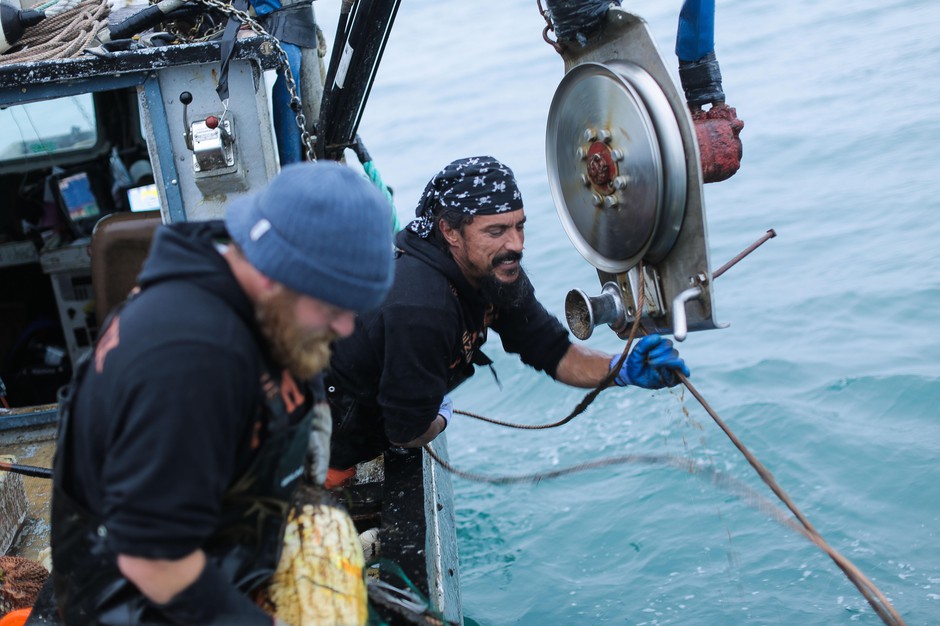
‘There Aren’t A Lot Of Other Options’: Port Orford’s Season Of Crab And Crisis
Oregon’s 2018 toxic algae troubles didn’t begin with the summer bloom tainting Salem’s water supply. The opening salvo actually came from the wintry Pacific, where high levels of domoic acid — a neurotoxin byproduct of marine algae blooms — disrupted seafood production along Oregon’s South Coast. For Port Orford in particular, where the fishing industry sustains about one-third of the local economy, this meant a season of loss instead of bounty. By the numbers, Port Orford really can’t afford more economic distress. >click to read<10:58



































